This article was created in partnership with Korean Film Festival in Australia (KOFFIA). The 2020 edition of the festival will be hosted digitally from October 29 – November 5 2020, exclusively in Australia. All films at KOFFIA 2020 will be free to watch. For more information, visit the festival website.
One of the most exciting aspects of this year’s KOFFIA 2020 is that eight of its eighteen film lineup are films directed by women, many of which are debut features or sophomore efforts. Some of the most buzzed about films in the lineup include The House of Us, directed by Yoon Ga-Eun and A Boy & Sungreen, director Ahn Ju-Young’s debut feature. The House of Us is director Yoon’s follow up to her critically acclaimed debut feature The World of Us (2016), and her work has won recognition of director Bong Joon-Ho, who singled out director Yoon as one of the twenty rising filmmakers to watch in the 2020s.
A Boy & Sungreen and The House of Us are unique in that they feature young protagonists aged 10-14 years old. This is an age in which children are old enough to catch on to the more adult situations going on around them, but have yet to hit the maturity and angst of high schoolers. This in-between phase between childhood and teenage years is an even more precarious period of time and also one that has rarely been given much attention in cinema.
With these titles enjoying a warm reception at festivals all over the world currently—along with last year’s festival hit House of Hummingbird similarly following a 14-year-old middle schooler—perhaps we are witnessing a trend in independent Korean cinema, especially with women filmmakers, in using this challenging period of time in a child’s life to grapple with stories less told, as well as tackle social issues.
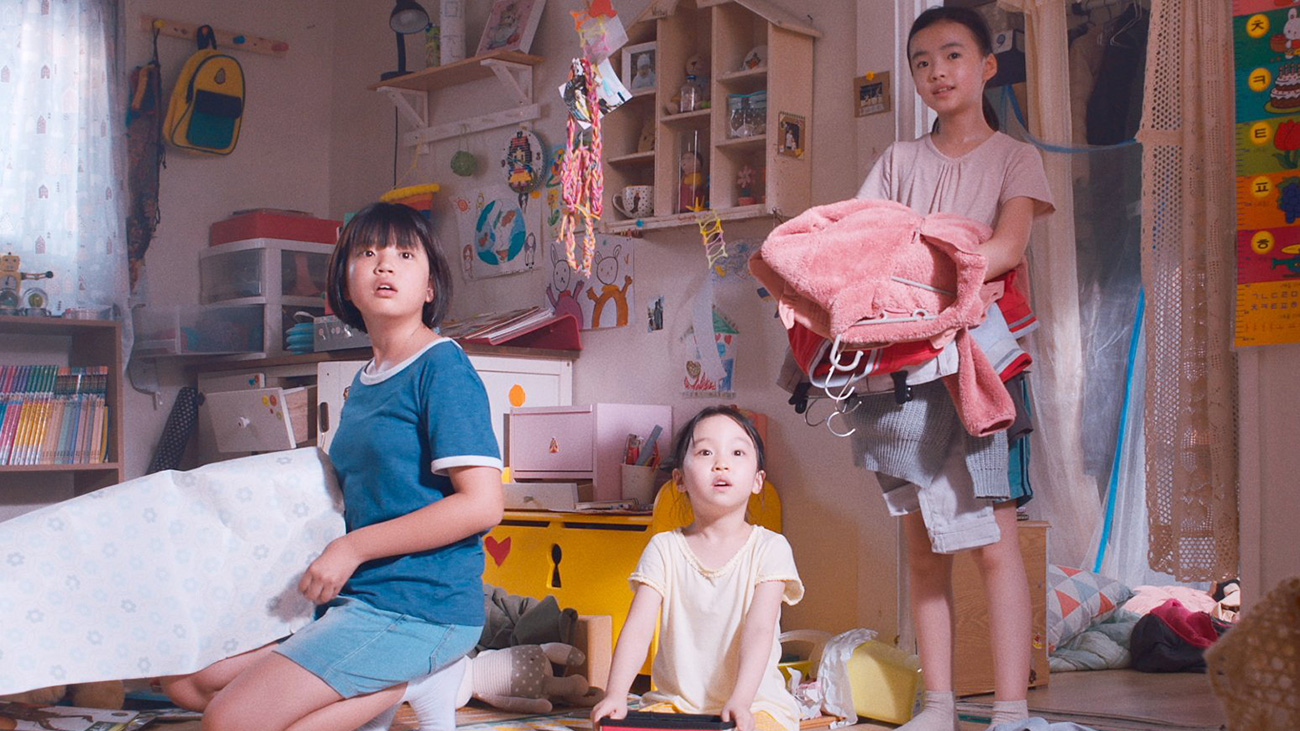
Respecting pre-teens and children as you would an adult
“I’m really interested in the heart of children who come to terms with a certain period that affects them directly and eventually overcome it… And there aren’t that many stories like that, are there? Girls growing up isn’t a subject that lends itself to films particularly well. I want to keep telling stories about children, as long as the children will allow it, and as long I can do it well enough. I also want to tell stories about people that take root in reality.” – Director Yoon Ga-Eun on The House of Us
“Never work with animals or children” is a common saying in the film industry. Besides legalities and restrictions, directors often find difficulty in communicating with and directing children. Additionally, as films are often catered to the purchasing power of adults, producers may feel audiences are less interested in the story of children, especially that first stage of adolescence between the ages 10-14 where the stories are no longer fun and childish, nor do they comfortably fit into the genre of high school or coming-of-age cinema.
Director Kim Bora said that the worst piece of advice she ever received about her film House of Hummingbird was, “Why focus on a middle school girl? Make her into a high school girl so that you can cast a big named actress.” Indeed, because it is much easier to market stories about high schoolers that stories about pre-teens often get overlooked. In both A Boy & Sungreen and The House of Us, directors Ahn Ju-Young and Yoon Ga-Eun very much respect the personhood of their characters, pre-teens and children alike. These characters are wholly themselves, and do not act as an extension of adult characters or for morality to be projected onto them. Instead, they are given agency and we as an audience experience the world as they do.
The two seventh-grade protagonists in A Boy & Sungreen, best friends Bohee (Ahn Ji-Ho) and Nokyang (Kim Ju-A), are treated very much how any other director might treat adult characters. They are active participants in their own journey and are quite literally self-producing their own narrative through making a documentary. The act of filming everything also feels quintessentially of its time, given the ubiquity of smartphones today even amongst children. Instead of a cliched, tired take on the danger of smartphones in the hands of children, Ahn Ju Young uses it as a tool for the children to take charge of their own stories, in both their pursuit of truth (Bohee in trying to find out who his father is) and documenting their experiences (Nokyang, a budding filmmaker).
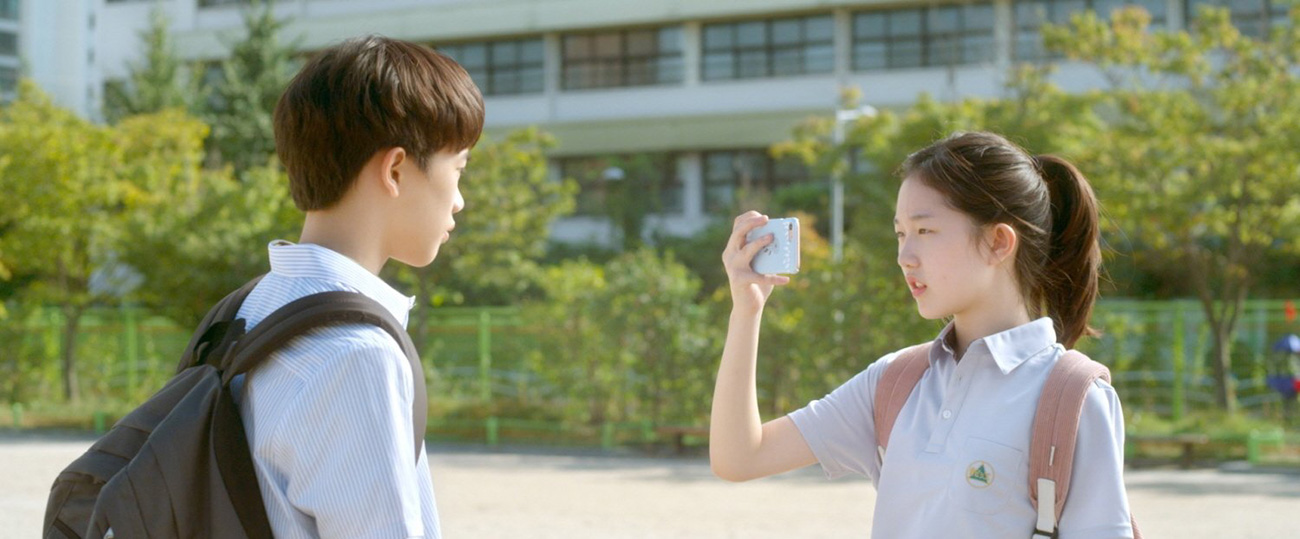
Much of A Boy & Sungreen is about the choices we make that shape our identity, including what we choose to believe in. The events that unfold in the story never feel like they are happening to Bohee and Nokyang (besides an unexpected family loss) but rather, because of their quest to discover the truth about Bohee’s father, these are steps that they actively make. At the end of the day, the truth is the narrative they choose to construct and believe based on what they have observed. In this, it is absolutely thrilling to see Ahn Ju-Young believe that her young characters are capable enough to come to the right decisions for themselves, without ever once condescending to the characters or audience. Bohee accepts the fact that he may never find out what happened to his father in the end, and maybe that’s okay, because he has discovered that the people around him, including Nokyang are really what matters.
Meanwhile, Yoon Ga-Eun continues the precise style she built in The House of Us, where we observe the world as 11-year-old protagonist Hana does. The camera is often placed at eye level of the children, such as the opening shot of the film, where Hana is literally in the middle of a quarrel between her parents, and their faces are cropped out of her frame. We see a flurry of emotions cross her face as this goes on for several minutes. This is another brilliant touch of director Yoon’s, where she allows her camera to stay on her young actors’ faces for an entire take so we can see the myriad of emotions that they are experiencing.
When asked about her use of close-ups, she said for her first film that, “I constantly want to show the drama expressed through my main character’s face. Again it’s about the honesty of body language, children have no poker-face.” Often, close up shots can feel like an easy way to make us understand a character’s emotions, but in The House of Us, Yoon’s use of close-ups extend to objects. The detail of a hand-made box, the many shots of egg dishes throughout the film—these close-ups feel purposeful to detail the small but growing world of the children. All the sounds in her films are also diegetic, as what the children would experience. “I want the audience to feel the ambiance: the sounds, the words, the yelling… To take you into the children’s world and make you feel their energy.” This naturalistic, considered storytelling avoids manipulating its audience and instead trusts them to feel the same emotions that the children do.
Where A Boy and Sungreen focuses on letting the characters lead the story, The House of Us focuses on world-building for the three young girls to inhabit, one only you are privy to. In both instances, the directors show respect and care for their characters’ developing inner worlds despite the difficult situations they are placed in and struggles they face.
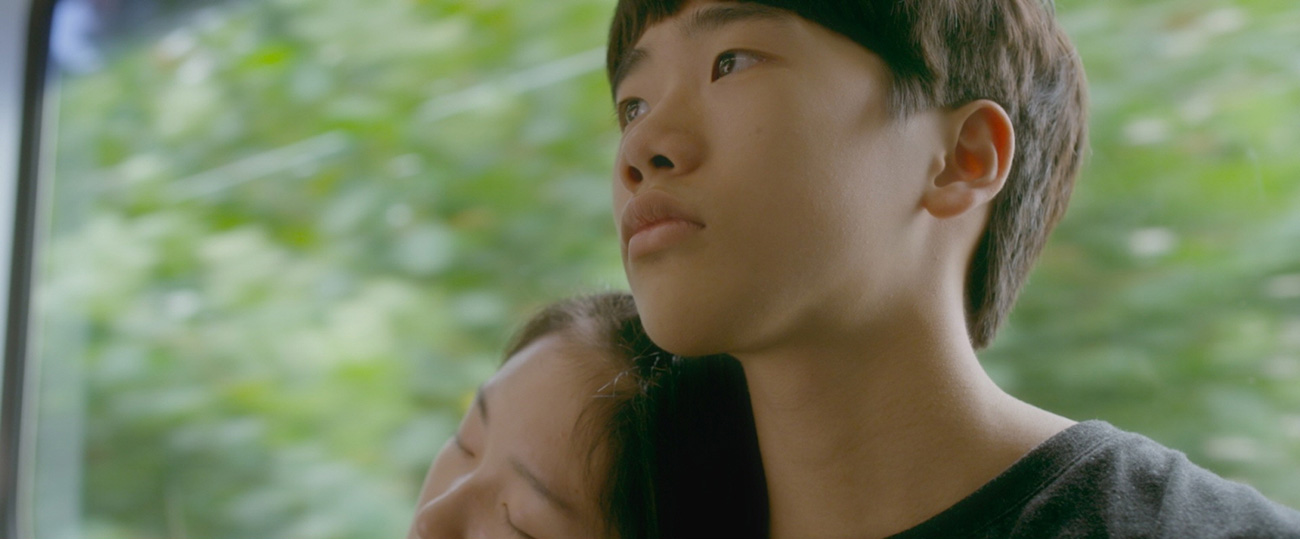
Deconstructing the nuclear family
“Divorce is a unique hurt, different from other types of loss because it doesn’t strike from out of the blue. There is a deliberateness, or at least a creeping inevitability, to the splintering of families with children, and a sense, however ill-founded, that everyone who endured the event was an active participant, even when they were collateral damage… All children of divorce have at least some moments when they wonder if it’s really their fault…” – Matt Zoller Seitz writing on The Royal Tenenbaums1 Seitz, Matt Zoller. The Wes Anderson Collection. New York: Abrams, 2013.
In both A Boy & Sungreen and The House of Us, as well as Moving On by Yoon Danbi, another film by a first-time female filmmaker in the KOFFIA 2020 lineup, the nuclear family is in the process of splintering, has splintered or begins to form roots around something new. Using children as the storytellers, at its core, these directors ask the big question: What makes a family? We see found, curated and jumbled families form from the hurt and trauma of a splintered one. Perhaps it is because the forming of a nuclear family is so rooted in the socialisation of girls, and later women, and the family is the traditional backbone of most Asian societies that deconstructing the myths around it has become a compelling recurring theme for women filmmakers.
Best friends Bohee and Nokyang of A Boy & Sungreen no doubt formed a bond over their shared similarities of being raised in single-parent families. Bohee was told his father died in a car accident, but discovers his father may have just left him and his mother. Meanwhile, Nokyang’s mother passed away during childbirth, leaving her father and nagging grandmother to raise her. The lack of honesty on the part of Bohee’s mother drives his and Nokyang’s quest to search for his father despite only vague clues. But more than that, it is also partly a journey for his own personhood, especially when contrasted next to Nokyang. Nokyang is an instigator: confident, determined and assertive in all the ways Bohee struggles to be; a complete subversion of the roles boys and girls are often placed in the media. Bohee is a victim of gendered insults, which is rooted to his close female relationships, and it clearly affects him more than it does Nokyang. Perhaps Bohee’s lack of self-esteem is also a result of the stigma placed on single mother families in South Korea, and what motivated Bohee’s mother to say his father died in an accident instead of revealing that he may have just abandoned the family? Director Ahn never gives us clear answers, letting the audience make its own conclusions, but the clues are there.

While this is largely Bohee and Nokyang’s story, we get a glimpse at the struggles Bohee’s mother faces as a single mother, and it is clear that Nokyang’s father does not experience the same turmoil, as we barely get to see him at all. At the end of the film, the audience realises that finding Bohee’s father was never really the point after all, and rather, it was Bohee finding the support structure around him that would help shape who he becomes. His mother made some mistakes. She isn’t perfect, but who is? In the end, she’s doing her best to provide him a safe, happy home despite her circumstances. In his ‘half-sister’ Namhee’s boyfriend Sung-Wook, he finds an unlikely surrogate father figure, a bumbling man who reluctantly looks out for him while Namhee is away and comes to genuinely care for the boy. Both Nokyang and Bohee also realise at the end of this journey that they are each other’s families. After all, what is family but someone who will stick by your side through thick and thin? It is also refreshing that their relationship remains entirely platonic, and even develops into a deeper, more familial dynamic. Part of the charm of A Boy & Sungreen is the construction of your own narratives. It feels fitting therefore, that Bohee and Nokyang come together to build their own strange, sprawling little family.
Where A Boy & Sungreen reluctantly provides clear answers, The House of Us is more explicit in its focus on divorce, a subject that’s so universal and has received several high profile films depicting the fraught nature of it. What makes The House of Us uniquely devastating from Scenes from a Marriage (1973) or Marriage Story (2019) is that we bear witness to divorce through the eyes of a child. Additionally, Yoon Ga-Eun chooses to set her story in the ‘creeping inevitability’ of it, during the decay of the marriage.
We all know what comes after, we’ve seen it and in some cases have even lived it, and that’s usually where the moving on begins. But the dread of everyday fraughtness is unique to every family and is what causes the most trauma in the end. “If you want to split up, just do it already!” shouts Hana’s older brother Chan (incidentally also played by Ahn Ji-Ho) at his parents in the middle of an argument while Hana watches. Chan’s outburst is probably something all children from divorced parents have all thought to themselves or actually voiced out loud. Hana is a naturally optimistic 11-year-old mature beyond her years. She sees and knows her parents’ arguments are a symptom of a bigger problem. Her chance meeting and the bond she forms with sisters Yoomi and Yoojin shows her falling naturally into an older sister role with them. While she scrambles to save her own parents’ marriage by proposing a family trip, she also tries to save Yoomi and Yoojin’s home from being sold and wishes to reunite them with their parents. She is earnest and hopeful in her attempts in a way only a child can be. Her brother, who is in middle school, has already become resigned to the impending divorce. When he sees her preparing packed egg sandwiches for the whole family for their seaside trip, he snorts—“You know none of this is going to work, right?”
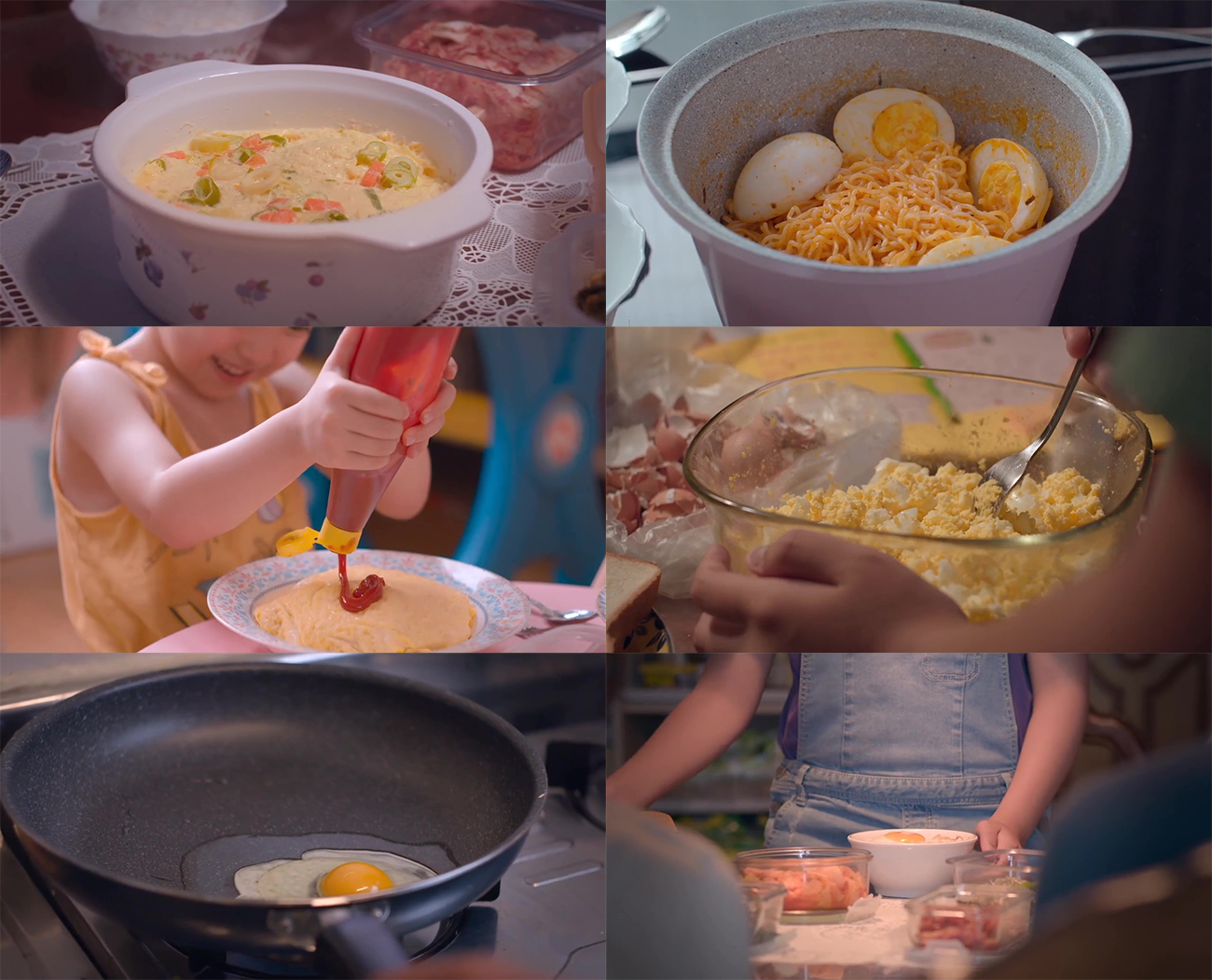
Hana’s egg dishes are a recurring motif throughout the film. Because Yoomi and Yoojin’s parents live away from Seoul for work and their uncle sometimes doesn’t have time for them, Hana makes omurice, steamed eggs, boiled eggs with spicy noodles for the sisters to eat. We witness how Hana begins cooking for the sisters because her own family often has no time to sit down and eat dinner together, a sad but accurate reflection of modern day life. Visually, the bright yellow of the eggs is comforting and fits in with the almost childlike colour palette of the film. Director Yoon highlights warm tones and blues, so the yellow is extra vibrant, which only serves to make it all the more devastating in its significance. Eggs are a comforting sort of food, and they often represent warmth, life and family in Asian societies. In the absence of both sets of biological families, Hana makes Yoomi and Yoojin her family through eggs. When the final scene of the film occurs, Hana finally comes to terms that her family will be inevitably broken. It also marks the first time she and her family finally sit down to have dinner together in the story, and of course she serves each of them a simple fried egg over rice.
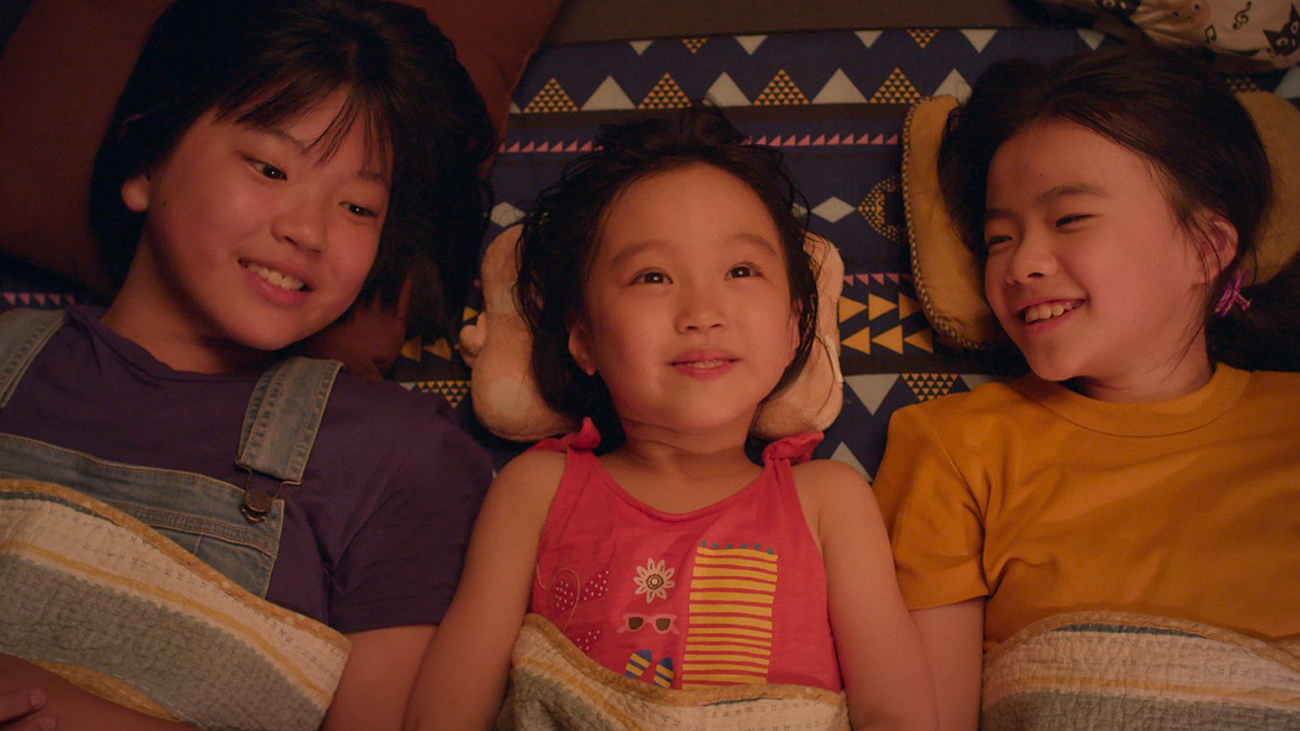
Writing around Ahn and Yoon’s films has generally drawn comparisons to the work of Hirokazu Koreeda or Hou Hsiao-Hsien and understandably so as these thoughtful, family dramas (with a touch of the coming-of-age genre) would not look out of place in their filmographies. However, it is important to note that directors Yoon and Ahn—along with the new wave of women filmmakers from South Korea—offer perspectives that are uniquely feminine, and the ways in which they deconstruct and subvert the family unit in fresh and nuanced ways stray away from their male contemporaries. The journeys the characters take and the sensitivity to issues that girls and women face reflect how being female in South Korea has shaped the filmmakers’ experiences and the stories they tell.
In watching A Boy & Sungreen and The House of Us, as well as reflecting on films like House of Hummingbird, Yoon Danbi’s Moving On and Yoon Ga-Eun’s debut film The World of Us (2016), even though the films share similarities in certain themes and of course, the age range of their protagonists, it is quite clear that each of these films are uniquely their own. Even The House of Us, which acts as a spiritual sequel to The World of Us, is very much different in the themes it tackles. Each of the directors do however use the point-of-view of children and young teenagers to offer social commentary and reflect on issues facing modern Korean society today: the stigma facing single-mother families, working-class struggles and the breakdown of the nuclear family. Children are amongst the most vulnerable groups in society and when it comes down to it, most issues directly affect them in the hardest of ways. And yet their stories are ignored because they aren’t seen as universal or compelling, ironic considering how all filmmakers and audiences have experienced being an eleven year old.
In taking the point of view of a child, filmmakers like Ahn Ju-Young and Yoon Ga-Eun have been able to simplify and get to the root of issues. Perhaps even more compellingly, both these filmmakers have allowed their characters to be active participants in their own journeys, granting children a voice where they might be ignored outside the world of cinema. We can only hope that funding continues to support these women filmmakers so that they may continue to tell the stories untold, and bring more diverse experiences to us on the silver screen.
